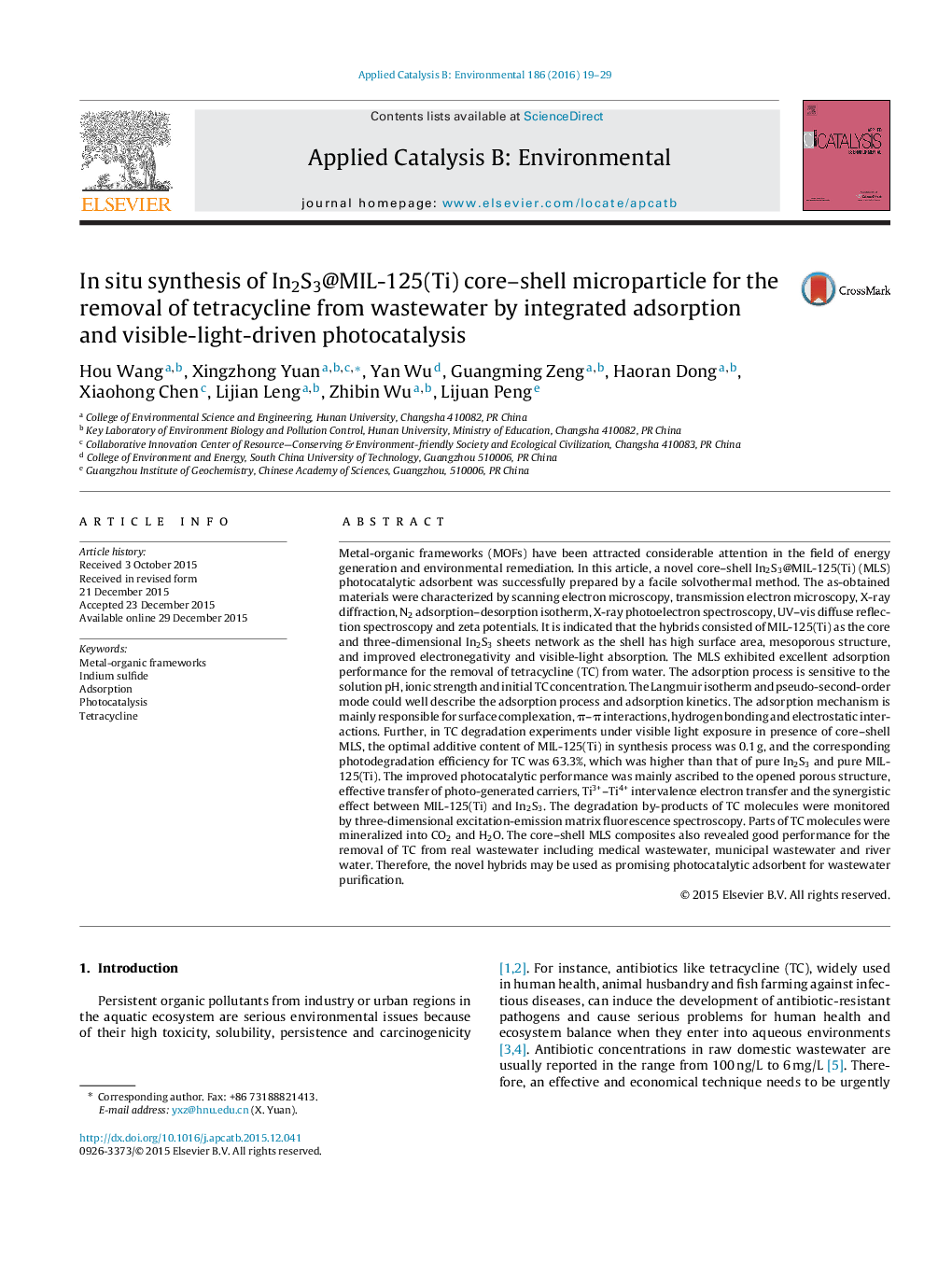| کد مقاله | کد نشریه | سال انتشار | مقاله انگلیسی | نسخه تمام متن |
|---|---|---|---|---|
| 44827 | 46367 | 2016 | 11 صفحه PDF | دانلود رایگان |

• Fabrication and characterization of novel ln2S3/MIL-125(Ti) photocatalytic adsorbent.
• Excellent adsorption capacity and photocatalytic activity of MLS for TC removal.
• Monitor of TC before and after the adsorption and photo-degradation by 3D EEMs.
• High treatment performance in real wastewater matrices via the integrated process.
Metal-organic frameworks (MOFs) have been attracted considerable attention in the field of energy generation and environmental remediation. In this article, a novel core–shell In2S3@MIL-125(Ti) (MLS) photocatalytic adsorbent was successfully prepared by a facile solvothermal method. The as-obtained materials were characterized by scanning electron microscopy, transmission electron microscopy, X-ray diffraction, N2 adsorption–desorption isotherm, X-ray photoelectron spectroscopy, UV–vis diffuse reflection spectroscopy and zeta potentials. It is indicated that the hybrids consisted of MIL-125(Ti) as the core and three-dimensional In2S3 sheets network as the shell has high surface area, mesoporous structure, and improved electronegativity and visible-light absorption. The MLS exhibited excellent adsorption performance for the removal of tetracycline (TC) from water. The adsorption process is sensitive to the solution pH, ionic strength and initial TC concentration. The Langmuir isotherm and pseudo-second-order mode could well describe the adsorption process and adsorption kinetics. The adsorption mechanism is mainly responsible for surface complexation, π–π interactions, hydrogen bonding and electrostatic interactions. Further, in TC degradation experiments under visible light exposure in presence of core–shell MLS, the optimal additive content of MIL-125(Ti) in synthesis process was 0.1 g, and the corresponding photodegradation efficiency for TC was 63.3%, which was higher than that of pure In2S3 and pure MIL-125(Ti). The improved photocatalytic performance was mainly ascribed to the opened porous structure, effective transfer of photo-generated carriers, Ti3+–Ti4+ intervalence electron transfer and the synergistic effect between MIL-125(Ti) and In2S3. The degradation by-products of TC molecules were monitored by three-dimensional excitation-emission matrix fluorescence spectroscopy. Parts of TC molecules were mineralized into CO2 and H2O. The core–shell MLS composites also revealed good performance for the removal of TC from real wastewater including medical wastewater, municipal wastewater and river water. Therefore, the novel hybrids may be used as promising photocatalytic adsorbent for wastewater purification.
Figure optionsDownload as PowerPoint slide
Journal: Applied Catalysis B: Environmental - Volume 186, 5 June 2016, Pages 19–29